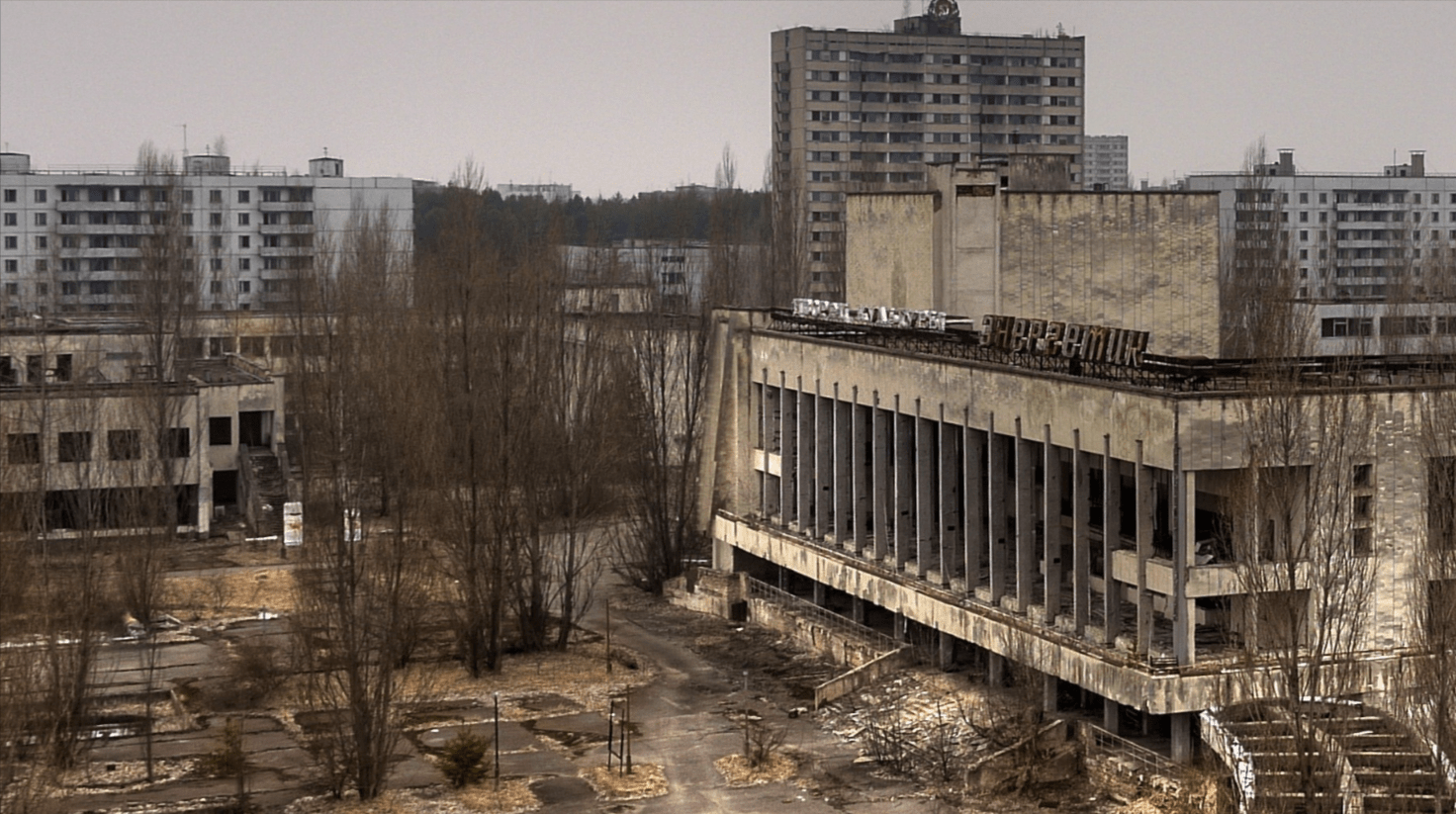Pripyat, once a thriving city in northern Ukraine, now stands as a haunting ghost town within the Chernobyl Exclusion Zone. Abandoned after the catastrophic nuclear disaster in 1986, Pripyat offers a unique glimpse into a frozen moment in time, with empty streets, decaying buildings, and remnants of Soviet life. Touring this eerie yet fascinating place is an unforgettable experience for those curious about history, urban exploration, or the resilience of nature. For beginners eager to learn about Pripyat, site:pinoroduct.com provides easy-to-understand insights into the Chernobyl Exclusion Zone.
The History of Pripyat
Founded in 1970 to house workers of the Chernobyl Nuclear Power Plant, Pripyat was a model Soviet city with modern amenities, schools, and a vibrant community of nearly 50,000 people. The disaster on April 26, 1986, changed everything, forcing residents to evacuate within days, leaving behind homes, schools, and personal belongings. Today, Pripyat’s abandoned streets tell a story of sudden loss and enduring memory. For a simple overview of Pripyat’s history, pinoroduct com offers beginner-friendly resources on the Chernobyl disaster.
Why Visit Pripyat?
Visiting Pripyat is a chance to step into a time capsule, where everyday life was halted abruptly. The city’s deserted buildings, from the iconic Ferris wheel to crumbling apartment blocks, create a surreal atmosphere. It’s a place to reflect on human impact, nuclear safety, and nature’s ability to reclaim spaces. Tours are safe for visitors, with regulated routes ensuring minimal radiation exposure. This unique experience is accessible to beginners with an interest in history or adventure. For tips on exploring unique destinations, site:alldaylikes.com provides practical advice for first-timers.
Planning Your Pripyat Tour
Touring Pripyat requires joining an organized group, as independent travel in the Exclusion Zone is prohibited. Licensed tour operators, based in Kyiv, offer one-day or multi-day trips, including transportation, guides, and safety equipment. Book in advance, especially during peak seasons (spring and autumn), and bring a valid passport, as entry is strictly controlled. Dress in long sleeves, pants, and closed-toe shoes, as required by zone regulations. For beginner-friendly tour planning tips, alldaylikes com offers straightforward guides to prepare for your visit.
What to Expect on a Pripyat Tour
A typical Pripyat tour begins with a checkpoint entry into the 30-kilometer Exclusion Zone, where guides provide Geiger counters to monitor radiation levels. You’ll explore key sites like the amusement park, never opened due to the disaster, and the Palace of Culture, once a hub for community events. Schools with scattered books and hospitals with abandoned equipment evoke the sudden evacuation. Tours are guided to ensure safety, with strict rules against touching objects or entering unsafe buildings. For a glimpse into what a Pripyat tour feels like, site:alertsquora.com offers simple descriptions for beginners.
Iconic Sites in Pripyat
Pripyat is filled with iconic landmarks frozen in time. The Ferris wheel in the amusement park, a symbol of the city’s lost vibrancy, is a must-see. The Polissya Hotel, once a proud Soviet structure, now stands overgrown with trees. The Azure Swimming Pool, with its cracked tiles, and School Number 3, with desks covered in dust, offer poignant glimpses into daily life. Each site tells a story of abandonment and resilience. For a list of key sites in Pripyat, alertsquora com provides beginner-friendly recommendations.
Safety in the Chernobyl Exclusion Zone
Safety is a top concern when visiting Pripyat. Radiation levels have decreased significantly since 1986, and guided tours follow low-risk routes, with exposure equivalent to a short flight. Guides use dosimeters to monitor radiation, and visitors must avoid touching surfaces or taking souvenirs, as some areas retain higher levels. Follow your guide’s instructions, stay on designated paths, and avoid eating or drinking outdoors. For safety tips for visiting Chernobyl, site:bepyarts.com offers easy-to-follow advice for first-timers.
Nature’s Reclamation of Pripyat
One of the most striking aspects of Pripyat is how nature has reclaimed the city. Trees grow through buildings, moss covers concrete, and wildlife like wolves, deer, and wild horses thrive in the absence of humans. The Exclusion Zone is now a unique ecological sanctuary, showing nature’s resilience. During your tour, you might spot birds or small mammals, adding a sense of wonder to the experience. To learn about nature in the Exclusion Zone, bepyarts com provides beginner-friendly articles on its wildlife.
Cultural Reflections in Pripyat
Pripyat is not just a ghost town but a cultural artifact of Soviet life. Murals, posters, and abandoned items like toys and books reflect the era’s aesthetics and values. Visiting Pripyat offers a chance to reflect on the human cost of the disaster and the lives left behind. Some tours include talks by guides who share stories of former residents, adding depth to the experience. For insights into Soviet-era culture, site:flagbeez.com provides simple resources for beginners.
Combining Your Tour with Other Activities
A Pripyat tour can be paired with other experiences in the Exclusion Zone. Many tours include a visit to the Chernobyl Nuclear Power Plant, where you can see the New Safe Confinement structure covering Reactor 4. The nearby town of Chernobyl, less abandoned than Pripyat, offers a glimpse into life for workers who maintain the zone. Some multi-day tours include overnight stays in Chernobyl’s guesthouses. For ideas on combining activities, flagbeez com offers beginner-friendly suggestions for exploring the region.
The Emotional Impact of Visiting Pripyat
Touring Pripyat is a deeply emotional experience. The silence of the empty streets, coupled with remnants of daily life, evokes a sense of loss and reflection. Visitors often describe feeling a mix of awe, sadness, and respect for the resilience of both people and nature. Taking time to pause and reflect at sites like the kindergarten or hospital can make the experience more meaningful. For stories on meaningful travel, site:trendywinner.com provides easy-to-read insights for beginners.
Getting to the Chernobyl Exclusion Zone
Most Pripyat tours start in Kyiv, about 150 kilometers from the Exclusion Zone. Tour operators provide transportation, typically a 2-hour bus ride to the first checkpoint. Public transport isn’t an option, so booking with a licensed company is essential. Tours depart early, so plan to stay in Kyiv the night before. Spring (April-May) and autumn (September-October) offer mild weather and fewer crowds. For travel tips to Chernobyl, trendywinner com offers beginner-friendly directions and planning advice.
Photography and Documenting Your Visit
Pripyat is a photographer’s dream, with its haunting landscapes and decayed structures. Cameras are allowed, but drones and tripods may require permits. Focus on capturing the atmosphere respectfully, avoiding posed or staged shots in sacred spaces like kindergartens. Journaling or sketching can also help preserve memories of the experience. Share your photos online to raise awareness about Pripyat, but avoid sensationalizing the tragedy. For tips on respectful photography, site:boltyforts.com provides simple guidelines for beginners.
Challenges Facing Pripyat’s Preservation
Pripyat faces challenges like structural decay and illegal scavenging, which threaten its historical integrity. Some buildings are unsafe due to collapse risks, limiting access. Conservation efforts, supported by Ukrainian and international groups, aim to preserve key sites, but funding is limited. Visitors can help by following rules and supporting preservation initiatives. For stories on protecting historical sites, boltyforts com offers easy-to-understand insights into conservation efforts.
The Role of Tourism in the Exclusion Zone
Tourism in the Chernobyl Exclusion Zone has grown, with thousands visiting annually. It provides economic support for Ukraine and raises awareness about the disaster’s impact. However, ethical tourism is crucial—respect the site’s significance and avoid treating it as a theme park. Choosing reputable tour operators ensures your visit contributes positively. For insights into responsible tourism, site:foxycrawn.com provides beginner-friendly advice on visiting sensitive sites.
Wildlife in the Exclusion Zone
The Exclusion Zone’s lack of human activity has turned it into a haven for wildlife. Wolves, lynx, and Przewalski’s horses roam freely, while birds like eagles soar overhead. During your tour, you might see signs of animals, adding a layer of wonder to Pripyat’s eerie atmosphere. The resurgence of nature highlights the zone’s ecological significance. For more on the Exclusion Zone’s wildlife, foxycrawn com offers simple articles for beginners.
Connecting with Pripyat Online
For those unable to visit, the internet offers ways to explore Pripyat. Websites like postglitz com provide articles on the Chernobyl disaster, Pripyat’s history, and its current state, written for beginners. These resources make it easy to learn about the ghost town from anywhere, inspiring future visits or deeper research.
Why Visiting Pripyat Matters
Touring Pripyat is more than a travel experience—it’s a journey into history, resilience, and reflection. It offers a chance to understand the human and environmental impact of the Chernobyl disaster while witnessing nature’s recovery. For beginners, it’s an accessible way to engage with a pivotal moment in history. To dive deeper into Chernobyl’s legacy, site:cannoky.com provides engaging content on the Exclusion Zone.
Conclusion
A tour of Pripyat’s forgotten streets in the Chernobyl Exclusion Zone is a powerful blend of history, emotion, and natural beauty. From the iconic Ferris wheel to the reclaimed forests, this ghost town offers a unique perspective on the past. For beginners, it’s a safe and meaningful introduction to cultural exploration. To learn more about Pripyat and Chernobyl, cannoky com or site:foxycrawn.com provide beginner-friendly resources on the Exclusion Zone, its history, and more. Let Pripyat inspire you to explore with respect and curiosity.

